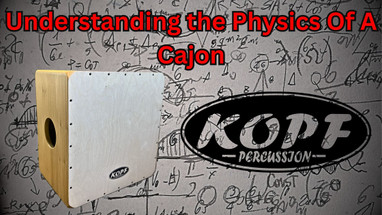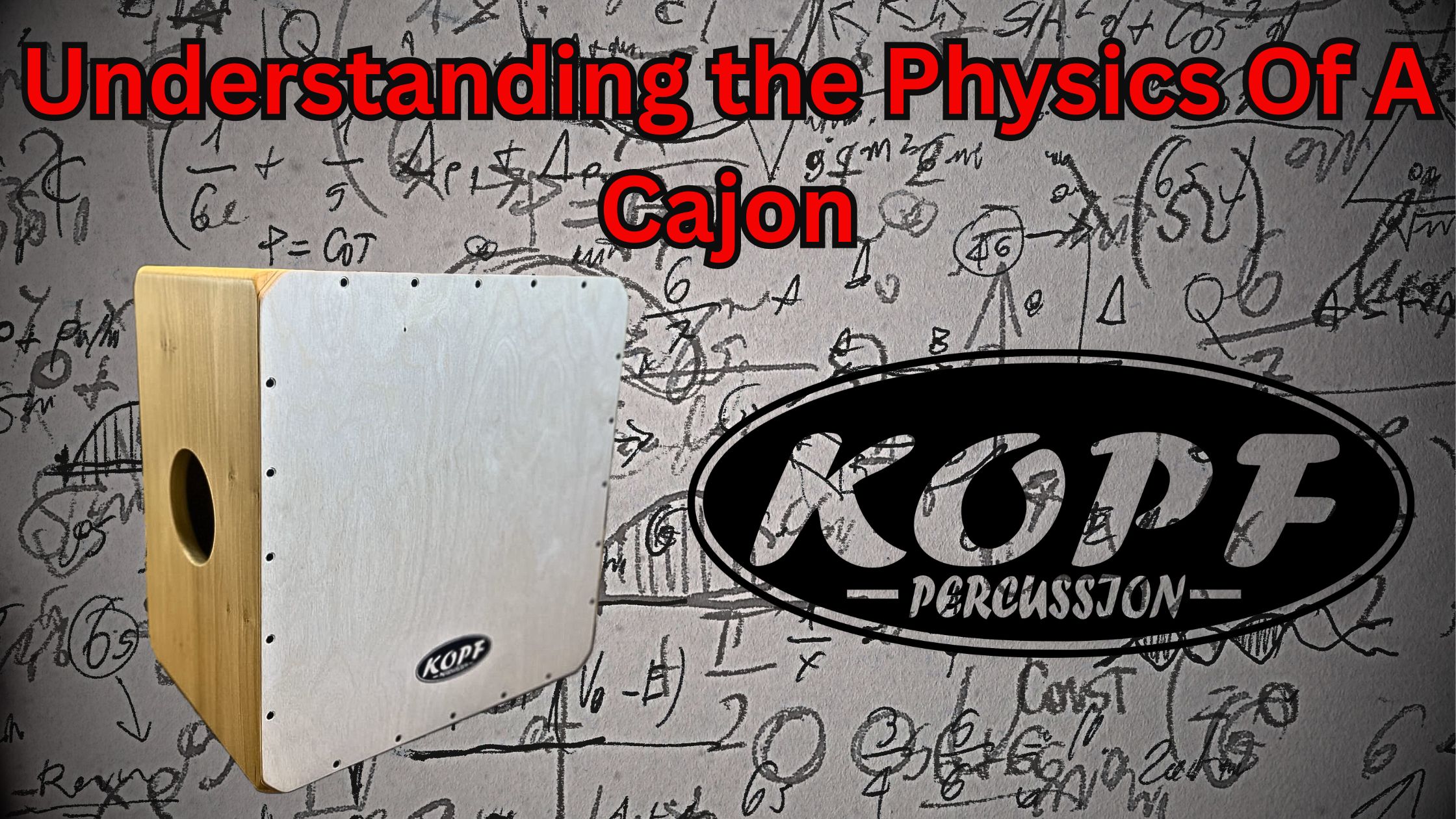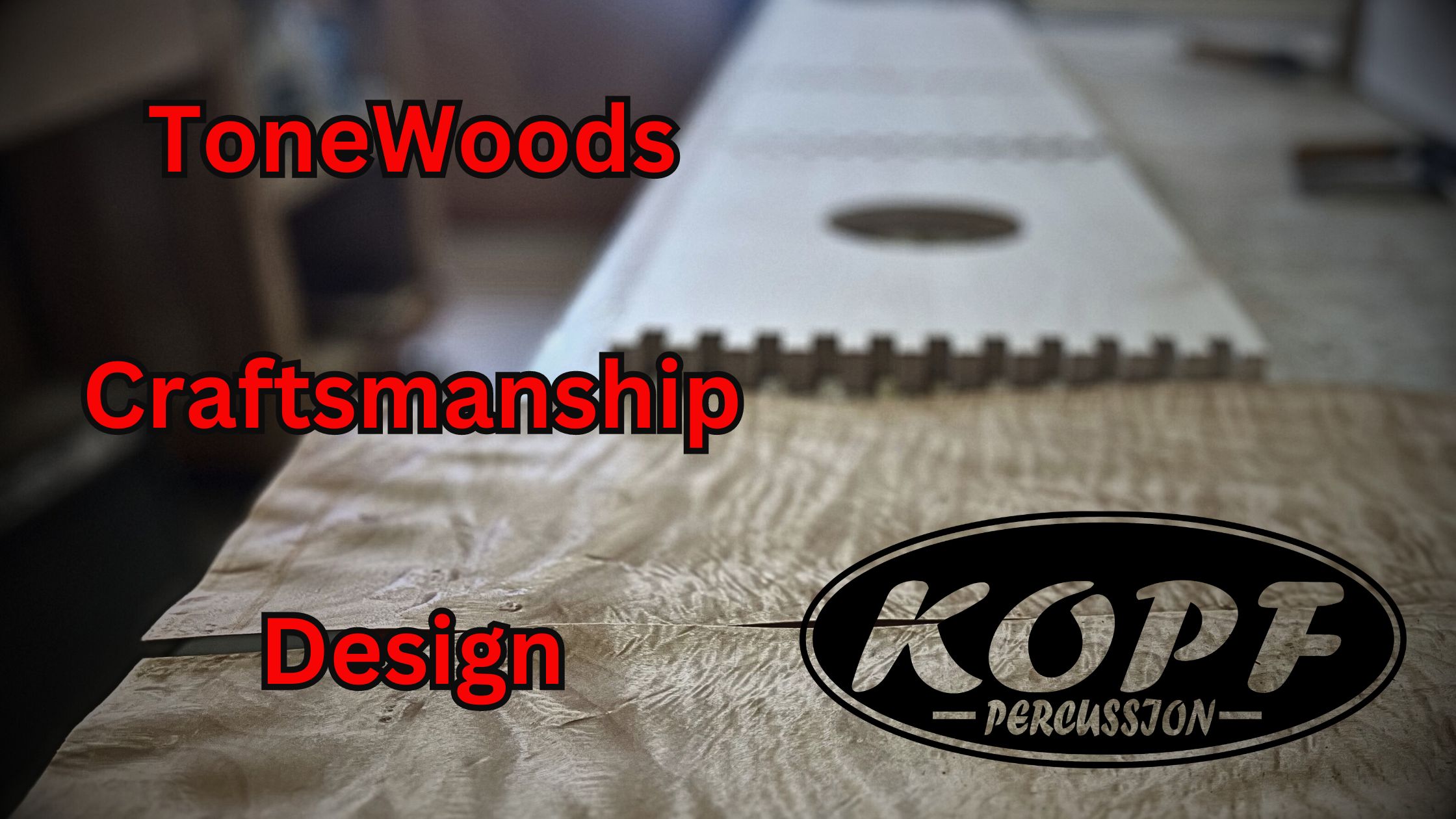Posted by Steve Head on 4th Aug 2024
Understanding the Anatomy and Physics of Cajon Drums
Cajon drums, simple in appearance yet profound in their acoustic properties, have captivated percussionists and music enthusiasts alike. Delving into the anatomy of a cajon and the physics behind its sound production reveals why this instrument has such a unique and versatile sonic character.
Anatomy of a Cajon
A cajon, often referred to as a "box drum," consists of several key components:
- Body: The main structure of the cajon, usually made from hardwood such as birch, maple, or walnut. The body is a rectangular box that provides the overall volume and resonance chamber. The dimensions of the body significantly affect the tonal quality and projection of the sound.
- Tapa (Playing Surface): The front face of the cajon where the player strikes. It is typically made of a thin sheet of plywood, often birch or maple, selected for its responsive and bright sound qualities. The tapa is crucial in producing the various tones the cajon can generate.
- Sound Hole: A circular opening located on the rear or side of the cajon. This hole allows air to move in and out of the cajon as it is played, which is crucial for sound projection and resonance. The size and placement of the sound hole are carefully considered to balance the cajon's tonal qualities.
- Snare Mechanism: Many modern cajons include a snare system to add a buzzing or snare-like effect. This can be achieved using guitar strings, snare wires, or other metal elements that vibrate against the tapa when struck. The snare mechanism can usually be adjusted or turned off to suit different musical styles.
- Internal Bracing: Some cajons have internal bracing or crossbars to enhance structural integrity and influence sound characteristics by modifying internal reflections and vibrations. The bracing can help control unwanted overtones and improve the clarity of the sound.
- Feet: Small rubber or wooden feet that elevate the cajon slightly off the ground to allow sound to escape from the bottom and to prevent the instrument from slipping during performance. The feet also protect the bottom of the cajon from wear.
The Physics of Cajon Drums
Understanding the physics behind cajon drums helps in appreciating how these components work together to produce sound.
- Sound Production:
- Vibration and Resonance: When the tapa is struck, it vibrates. These vibrations are transferred to the air inside the cajon, causing it to resonate. The size and shape of the cajon body influence the frequency and amplitude of these resonances, contributing to the instrument's tonal characteristics.
- Air Movement: The sound hole plays a crucial role in sound projection. As the tapa is struck, air is pushed out of the sound hole, creating pressure waves that we perceive as sound. The size and placement of the sound hole affect the pitch and volume of the sound produced.
- Acoustic Properties:
- Frequency Response: Different parts of the tapa produce different frequencies. Striking the center of the tapa generally produces lower frequencies (bass tones), while striking near the edges produces higher frequencies (snare tones).
- Snare Effect: The snare mechanism adds higher frequency vibrations (buzzing sounds) when the tapa is struck. This mimics the sound of a traditional snare drum and adds texture to the cajon's sound.
- Material Influence:
- Wood Types: The type of wood used for the body and tapa affects the sound. Hardwoods like maple and birch are preferred for their durability and bright sound, while walnut adds warmth and richness.
- Tapa Thickness: A thinner tapa responds more quickly to light touches and produces brighter tones, while a thicker tapa provides a deeper, more resonant sound.
- Construction Techniques:
- Joinery and Bracing: The construction of the cajon, including the types of joints and internal bracing, impacts how vibrations travel through the instrument. Box joinery and careful bracing can enhance durability and influence the sound by controlling how the body vibrates.
Application in Cajon Building
At Kopf Percussion, I incorporate these principles to create cajons that not only look beautiful but also offer superior sound quality. Understanding the physics and anatomy of the cajon allows me to make informed choices about materials, construction techniques, and design features. Whether it's selecting the right wood species for the desired tonal qualities or engineering the perfect snare system, every detail is considered to ensure that each cajon meets the highest standards of craftsmanship and musicality.
- Selecting Tonewoods:
- Maple: Known for its bright, crisp sound, maple is used for both the body and tapa of cajons to produce clear, articulate tones.
- Walnut: Provides a warm, resonant tone with excellent projection, making it ideal for a balanced sound profile in cajons.
- Birch: Offers a strong, punchy sound with good high-frequency response, perfect for players looking for a sharp attack.
- Cherry: Known for its rich, warm tones, cherry adds depth and character to the sound of the cajon.
- Craftsmanship:
- Attention to Detail: Each cajon is meticulously crafted, with careful attention to the alignment and fit of each component. This ensures that the instrument not only looks great but also performs exceptionally well.
- Customization: I offer custom cajons tailored to the specific needs and preferences of the player. This includes selecting the type of wood, adjusting the snare mechanism, and fine-tuning the tapa for optimal sound.
- Acoustic Design:
- Optimized Sound Hole: The size and placement of the sound hole are carefully calculated to enhance the cajon's projection and tonal balance.
- Internal Bracing: Strategic bracing inside the cajon helps control vibrations and eliminates unwanted overtones, resulting in a cleaner, more focused sound.
Conclusion
The cajon is a fascinating instrument where simple design meets complex acoustics. Its anatomy and the physics of sound production work together to create its distinctive voice. At Kopf Percussion, I harness this knowledge to build cajons that are not just instruments but works of art, each with its own unique sound and character. By appreciating the interplay of materials, construction, and acoustics, we can better understand and enjoy the beauty of this versatile percussion instrument.
As an Amazon Associate, I earn from qualifying purchases. This means that if you click on the link and make a purchase, I may receive a small commission at no extra cost to you. This helps support my work in providing quality content. Thank you for your support!
Whether you're a seasoned musician or a beginner, understanding the anatomy and physics of the cajon will enhance your appreciation of this remarkable instrument. Each cajon I build at Kopf Percussion is a testament to the rich heritage of percussion instruments and the endless possibilities of sound they offer.






